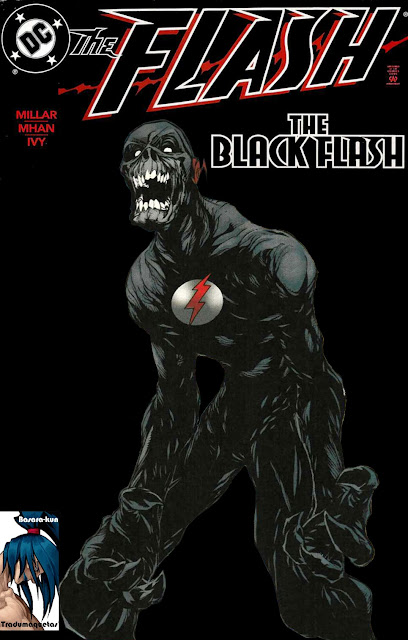Edited by Robert Beach
For my money, CW’s Flash is the best DC Comics live-action adaptation of the decade. In the mangled and mishandled quagmire of grim and gritty tripe like Man of Steel, broken films like Dark Knight Rises, and abysmal failures like Green Lantern, Flash stands above the rest as a stunning achievement. The show is a great blend of well-acted drama, light-hearted adventure, and an infectious exuberance for the source material, which has been greatly lacking from DC’s other endeavors.
Simply the fact Flash approaches its first season with the gonzo, go-for-broke, mindset that gave us time travel and psychic gorillas right out of the gate speaks volumes about its confidence and passion. Now the ramp up has begun for season 2, and it seems we’ll be seeing the start of the Flash Family as Jesse Quick, Wally West, and Jay Garrick have all been confirmed.
DC Comics' Families
The Flash family, as it’s called, is one of the last enduring bastions of DC’s silver age heroic stratification of characters. This has a lot to do with how DC parses its universe and its heroes. Where Marvel was concerned, their universe of characters was created by about 7 guys, so they’ve always grouped their characters by scope and focus. There’s the street-level heroes like Spider-Man and Daredevil, the cosmic characters like Guardians of the Galaxy, mystic heroes like Dr. Strange, and Earthly defenders like Captain America and Iron Man. DC doesn’t really have that same parsing.
DC comics were made much more off the cuff, usually as a revival of an older character. After DC found renewed popularity with its characters, the thinking became that rather than create fellow heroes of the same scope and grounding, DC would give its major characters a “family” of fellow heroes. This is how you get things like the extended Batman family of Robin, Batgirl, Batwoman, and Ace the Bathound. Additionally, this is where the legion of super pets comes from.
For the most part, the families tradition has faded off, and
DC has embraced something closer to Marvel in terms of scope. Even now the general unifying
element for DC heroes tends to be location rather than what the heroes are
fighting against. That’s why folks
like Batman (a gritty urban defender) and the Spectre (the ghostly embodiment
of God’s wrath) are counted as part of the same pantheon because they both
patrol Gotham City. The only
heroic family to endure into the modern era has been the Flash family, and that’s mainly because it was actually created in the current day and age.
The Flash Family
Most of these speedsters languished in obscurity or were haphazardly thrown into the main DC universe with little to no fanfare. That all changed for a brief time in the early 2000s when Geoff Johns began writing the Flash comic books. He made a point of reintegrating past characters and developing all of DC’s disparate speedsters into a legitimate Flash family.
The two major past heroes Johns’ returned to the fold were Max Mercury and Johnny Quick. Both characters were forgotten relics of the Golden Age with very few appearances under their belt. Max Mercury came into the series as a guardian for Bart Allen, the new Kid Flash at the time. On the other hand, Johnny Quick didn’t get to make it into the comics, but his daughter, Jesse Quick, also possessed super speed and became a major supporting character.
The Speed Force
This was all part of Johns’ push to develop something called the Speed Force. The Speed Force has appeared in CW’s The Flash, though it’s hardly been explained. The essential idea of the Speed Force is that it’s a quasi-mystical source of energy that certain humans can access to travel at amazing speeds.
People have plenty of explanations for the Speed Force; sometimes relying heavily on science while others time drawing on metaphysics to explain its nature. Regardless of your preferred explanation, Johns’ pitch was that all the major DC speedsters were able to access the speed force, which is why there were so many of them.
That’s a pretty clever idea, yet it’s ultimately par for the course with Geoff Johns. He tends to explain away the plethora of comic book similarities with broader metaphysical forces, like the revelation in Blackest Night that every hero who has returned from death was brought back by the same means. Speaking of which, death is actually represented by a physical manifestation within the Speed Force. The character referred to as the Black Flash is the humanoid embodiment of death, animated through the accelerating power of the Speed Force.
That’s the lowdown on the Flash Family and the nature of
the Speed Force. While it’s
unclear how much the Speed Force craziness will make it onto the show, we do
know that nearly the entire Flash family is now represented. Jesse Quick, Wally West, Barry Allen,
and Jay Garrick are all confirmed parts of season 2, and the show has been
teasing Max Mercury for awhile now through the mysterious Mercury Labs. I wouldn’t be surprised if by the end
of season 2 there are a lot more speedsters in Central City.






No comments:
Post a Comment